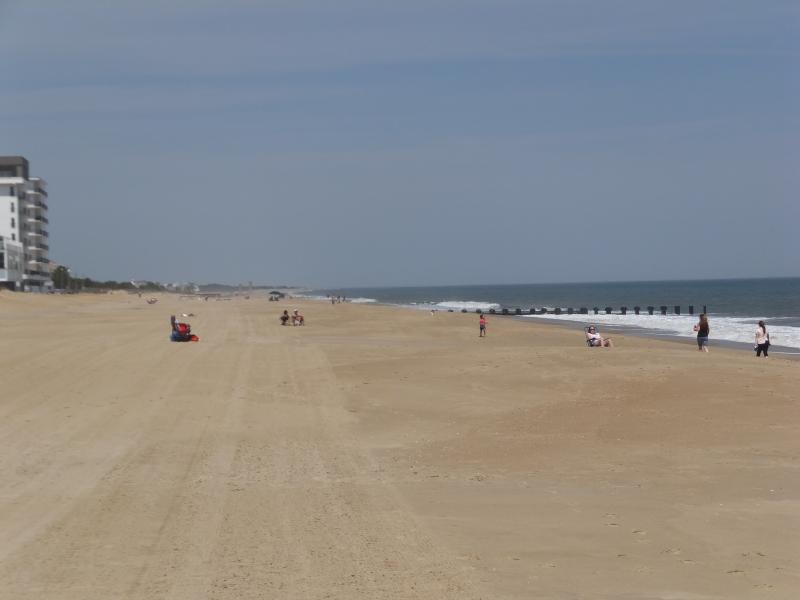Rehoboth Beach to be replenished in the fall
The U.S. Army Corps of Engineers will pump sand onto Rehoboth Beach and Dewey Beach in the fall, replacing sand lost during January’s nor’easter.
As has been the case since federal beach replenishment began in 2005, the costs of the project will be split; the corps will pay 65 percent and the state, through Delaware Department of Natural Resources and Environmental Control, will pick up the remaining 35 percent.
Tony Pratt, shoreline administrator for DNREC, said the bid package will include dune restoration as the dunes are typically maintained by DNREC. Pratt said only Rehoboth and Dewey will receive sand; about 242,000 cubic yards of sand would be pumped onto the beaches.
Steve Rochette, spokesman for the corps, said the repair would be a periodic renourishment, not a full repair of damage from storms in October and January. As a result, the project will place less sand on the beach than during repairs following Superstorm Sandy in 2012.
Periodic renourishment funds are available every three years and are only used if the corps determines the beach needs renourishment. Emergency funds typically put the beach back to the way it was before the storm damage.
“We are working towards a contract advertisement in May and contract award in the late June timeframe. Based on that schedule, construction could start in late summer/fall timeframe,” Rochette said
Costs are unknown at this point, Rochette said; the price tag will depend on bids and that the contract will have options for additional sand if the corps receives approval for additional emergency funding to repair storm damage.
The contract would also include an option to extend two stormwater outfall pipes, Rochette said. During the last beach replenishment, five stormwater outfall pipes became clogged with sand. Eventually, stormwater outfall pipes on Rehoboth Avenue and Delaware Avenue were extended.
Pratt said the borrow site used this time will be three miles offshore, just south of Dewey Beach. In the 2012 beach replenishment, the corps used a borrow site off Fenwick Island and transported the sand to Rehoboth.
The borrow site was changed for that replenishment because the sand from the 2005 replenishment was filled with stones and small pebbles. Pratt says this borrow site has not been used yet. There were reports that the Fenwick Island borrow site was damaged by the January storm, but Pratt said there has been no investigation and no reason to believe the Fenwick site was damaged.
Once a bid has been selected in June, Rochette said it would take around two to three months for the contractor to mobilize.
At a April 15 commissioners’ meeting, Commissioner Stan Mills said money for renourishment projects was tight at both the state and federal level. Speaking of his attendance at the American Shore and Beach Preservation Association conference, Mills said state officials indicated to him that the state only had $10 million in funds for beach renourishment. The state charges an 8 percent accommodations tax for hotels, with 1 percent of that 8 percent going towards beach renourishment projects. One idea, the state has floated the idea of a tax on short-term rentals as a way to sustain funding for beach renourishment.
However, state Sen. Ernie Lopez, R-Lewes, said, “There is no legislation out there or even a formal proposal of anything like that going forward. By this point in the legislative session, something like that would have been out and circulated for comment a long time ago. Anything can happen, but I can't see this going forward with only two months to go in the session.”
Ryan Mavity covers Milton and the court system. He is married to Rachel Swick Mavity and has two kids, Alex and Jane. Ryan started with the Cape Gazette all the way back in February 2007, previously covering the City of Rehoboth Beach. A native of Easton, Md. and graduate of Towson University, Ryan enjoys watching the Baltimore Ravens, Washington Capitals and Baltimore Orioles in his spare time.


























































